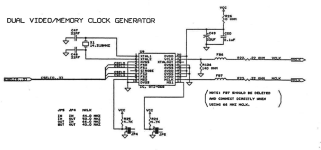GearTechWolf
Experienced Member
Chipset: OTI067, FCC ID: IDW87082025, board-number: Rev B 1087082025, S/N: 21M0502279, the missing resistor is R26, in-line between the oscillator pin on the ISA bus and U5/OTI068. (the first '8' in both the FCC ID and the board-number looks like a '6', but the FCC ID is invalid if it's input as a '6')
Oddly, it still works, but is a bit unstable. Thoughts on what to sub in?
(I'll add pictures of the card later, to help with identification of the specific card)
Oddly, it still works, but is a bit unstable. Thoughts on what to sub in?
(I'll add pictures of the card later, to help with identification of the specific card)

